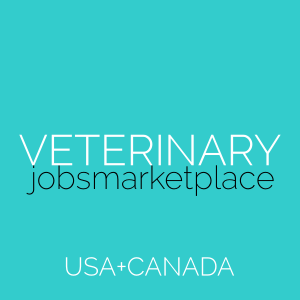
🌍 Tariffs & Trade Wars: What Your Practice Needs to Know
Running a veterinary practice is hard enough without having to worry about international politics—but here we are. With a new 10% minimum across-the-board U.S. tariff on all imports (even on the penguins of Heard and McDonald Islands), and targeted tariffs reaching 50% or more for specific countries and goods, the veterinary sector is not immune to the risks. These policy changes don’t just affect big corporate end of town and their supply chains—they will impact right down to the individual practice or mobile service tier – your monthly drug order, the cost of your next equipment upgrade, and your pricing and service levels and how you communicate these to clients.
This isn’t about theory or macroeconomics—it’s about practical, day-to-day impacts on your business. Whether you’re in New York, Sydney, or London, the growing complexity of global trade is no longer just background noise. It’s showing up in inventory availability, pricing volatility, and profit margins. And while it might be early to call this a crisis, neither is it “business as usual.” It requires attention, planning, and smart decision-making to avoid being blindsided…
Find New Team Members…the Fresh Way
1. Safeguard Your Supplies and Medications Budget
When tariffs are applied to key ingredients and finished goods, the cost of everyday items like syringes, gloves, and antibiotics can go up fast. Most veterinary clinics order these essentials through third-party distributors, and it’s a near-certainty that any tariff-driven cost increases will be passed along. That means your cost-per-treatment rises—and unless you’re adjusting somewhere else, your margins shrink.
Now’s the time to take a fresh look at your purchasing strategy. Are you relying too heavily on a single distributor or supplier? Do you have the ability to stockpile key consumables for a few extra months? With a 10% tariff minimum now in place in the U.S. and higher rates likely on some pharmaceutical components and devices, the cost impact will be real and sustained. Talk to your reps and ask direct questions about upcoming pricing changes. Switching to generic or locally manufactured alternatives—or rethinking how you bundle and price products—may help buffer the impact.
I’ve started renegotiating with our main suppliers—if costs are going up, I want the full picture early, not after the invoice arrives. – Marie L., Practice Manager, San Diego, USA
2. Expect Equipment and Technology to Get Pricier
Big-ticket items—like diagnostic units, surgical machines, and even computer hardware—are particularly exposed. Much of this equipment is imported from Europe or Asia, and as tariffs rise, the price tags follow. With U.S. tariffs now affecting nearly every import, this is no longer a question of “if” but “how much.” And similar patterns are starting to show in European and Australian markets as trade tensions ripple outward.
If your capital expenditure plans include an equipment upgrade this year or next, revisit them now. Get updated quotes, ask about supplier stock levels, and consider pulling forward your purchases. Delays or price jumps can be steep. And for practices in Australia and New Zealand, the volatility in global shipping costs—already high since COVID—may get worse if trade tensions continue to drive up fuel, freight, or insurance surcharges.
Our budget for equipment upgrades has a lot more moving parts now. We’re watching things closely and pushing up purchases where it makes sense. – Tom S., Medical Director, Christchurch, New Zealand
3. Supply Chain Reliability is No Longer a Given
Your inventory might look stable, but global supply chains are under more pressure than ever. Raw materials, active pharmaceutical ingredients (APIs), and finished products often crisscross multiple countries before landing at your clinic. Tariffs are just one side of the story—new export restrictions, retaliatory policies, or political flashpoints can add further disruptions.
The key is building in redundancy. Have more than one source for your top 20 most critical items. If your current supplier is based in a country exposed to new tariffs or export rules, look for a backup based in a different region. Even a small buffer stock of high-importance items can be the difference between keeping your schedule and turning patients away.
I’ve stopped assuming anything is “guaranteed” when it comes to delivery timelines. We’re putting backup suppliers in place for anything we can’t run without. – Fiona D., Clinic Owner, Edinburgh, UK
4. Clients Are Feeling the Cost Ripple Too
Veterinary clients are facing their own financial pressures, from rising grocery bills to energy costs. Tariff-induced price increases on pet medications or premium diets might feel minor to some, but they can be a tipping point for others. And when clients delay care or skip follow-ups, it’s not just bad for pets—it’s bad for practice revenue too.
Being upfront with clients—while keeping the tone empathetic—can go a long way. If something has gone up in price because of supply chain or import costs, explain the reason simply. Offer flexible options when possible, like wellness plans, split payments, or cost-conscious treatment alternatives. The goal is to keep pets healthy and clients engaged, even when budgets are tight.
Some of our clients are asking more questions about pricing, and that’s fair. The more honest we are about what’s behind it, the more understanding they’ve been. – Sarah J., Lead Vet, Vancouver, Canada
5. Challenges Can Spark New Opportunities
It’s not all bad news. In fact, trade disruptions often create openings for local suppliers or smaller manufacturers to step in and compete. Practices willing to look beyond their usual purchasing channels may find quality alternatives that weren’t even on the radar before.
And while bulk ordering isn’t always possible, some practices are teaming up with neighboring clinics to co-purchase larger quantities for a discount. These cooperative arrangements can reduce per-unit costs and protect everyone against future price spikes. It’s also a great time to negotiate longer-term pricing agreements with vendors who want to secure your business in uncertain times.
I’ve started trialling a new supplier that manufactures locally—never thought I’d switch, but in fact their service and pricing have been great so far. – Julian K., Vet Director, Melbourne, Australia
6. Global Trade Nuances Matter More Than Ever
Each region has its own trade dynamics, and veterinary practices need to understand how local rules affect their imports. In the US, across-the-board tariffs could soon apply to almost every import, from pharmaceuticals to steel used in equipment. In Europe, the post-Brexit trade environment has introduced new fees and red tape for many UK-EU veterinary products. And in the Asia-Pacific, being near manufacturing hubs helps—but export prioritization can still disrupt local supply.
United States Focus: U.S. veterinary practices should monitor federal trade moves closely. Recent policies like a proposed 10% baseline tariff on all imports mean virtually every overseas item – from Canadian pharmaceuticals to Asian-made lab equipment – could get pricier. Understanding these broad changes helps U.S. clinic owners brace for cost impacts across the board and advocate (through professional associations) for veterinary exemptions where possible.
European Considerations: European clinics benefit from the EU single market (smooth trade within member countries), but still face external trade dynamics. EU regulations and retaliatory tariffs (for example, on U.S. goods) can affect the price of imported veterinary equipment or specialist drugs. Additionally, post-Brexit adjustments have added paperwork and fees on UK-EU animal product shipments, potentially impacting how UK practices source vaccines or pet foods. Being aware of these regional specifics – such as preferential EU trade agreements that might keep Asian pharmaceutical imports cheaper than in the U.S. – allows European vets to plan purchases and supply chains intelligently.
Asia-Pacific Insights: In the Asia-Pacific, situations vary widely. Many countries in this region are hubs for manufacturing (China and India produce a large share of veterinary APIs and generics), which can be an advantage for local clinics sourcing domestically. However, practices in import-reliant nations (like smaller Southeast Asian economies or Australia/NZ for certain products) must watch global trade tensions just as closely. A U.S.-China trade war, for instance, might indirectly benefit an Asian clinic if Chinese suppliers offer discounts in alternative markets – or it could hurt if those suppliers cut exports altogether. Stay informed on regional trade pacts (e.g. RCEP or other free trade agreements) that might reduce or eliminate tariffs on veterinary products within Asia-Pacific. Adapting your strategy – whether it’s capitalizing on a new low-tariff supplier in your region or adjusting pricing on an imported product that suddenly costs more – will ensure your practice remains agile and competitive across different markets.
Staying regionally aware lets you make better decisions. Maybe that means switching to an EU-based pharmaceutical supplier if you’re in the UK, or adjusting your order cycles in the US to beat new tariffs coming into effect. Talk to your suppliers and industry networks regularly—being informed is one of the best ways to stay agile
I’ll be checking the news on trade policy now like I check weather forecasts—it affects more of our daily decisions than I ever expected. – Natalie M., Hospital Manager, Wellington, New Zealand
7. Managing Risk Without Losing Momentum
If you feel overwhelmed, you’re not alone—but there is a path forward. A few simple steps can protect your practice from the worst of the trade uncertainty. Start with an inventory audit: what are your most crucial items, and where do they come from? Then, talk to suppliers about their contingency plans. Can they guarantee supply? Are there substitutes?
Next, build a small buffer stock of essentials, even if it’s just a few weeks’ worth. Review your pricing quarterly to keep pace with costs. And look for service innovations—like bundling medications or offering at-home wellness kits—that maintain client value while helping you manage margins.
We’ve added more structure to our inventory planning—just-in-time is too risky now. Even a few extra weeks of supply gives us room to breathe. – Andrew P., Practice Owner, Austin, USA
In conclusion…
Tariffs and trade wars are not background noise anymore—they’re showing up directly in your clinic’s expenses, supplier relationships, and even your service pricing. The latest across-the-board U.S. tariffs mark a sharp policy shift, and the ripple effects are being felt in Europe, Asia, Australia, New Zealand, and beyond. This isn’t a temporary speed bump; it’s a new layer of operational risk that veterinary leaders need to factor in proactively.
But while the risks are real, so are the tools to manage them. With the right foresight, diverse supplier relationships, and transparent communication with clients, practices can stay nimble and resilient. This isn’t about panic—it’s about preparedness. Those who take action now will be better positioned to maintain stability and deliver great care, no matter how unpredictable the trade environment becomes.
About Veterinary Jobs Marketplace…
We connect veterinary talent with the best veterinary jobs. Explore our Job Campaigns for GP Veterinarians, Emergency Vets, Veterinary Nurses, Technicians, and more, each enriched with video insights. Find new team members using our unique Reach, Frequency, and Story strategy, now including One-to-One Outreach.
For Job Seekers: Discover your ideal veterinary jobs in cities across the USA and Canada. Register for custom Job Alerts, bringing the latest opportunities directly to your Inbox.
For Employers: Register to reach skilled veterinary professionals for your practice. From GP Veterinarians to Emergency Vets, our Job Campaigns help you find the perfect team members.
Worldwide Audience: Expand your reach internationally to the UK, Europe, Australia, New Zealand, and Asia. Our global reach will connect you to our global veterinary community.

